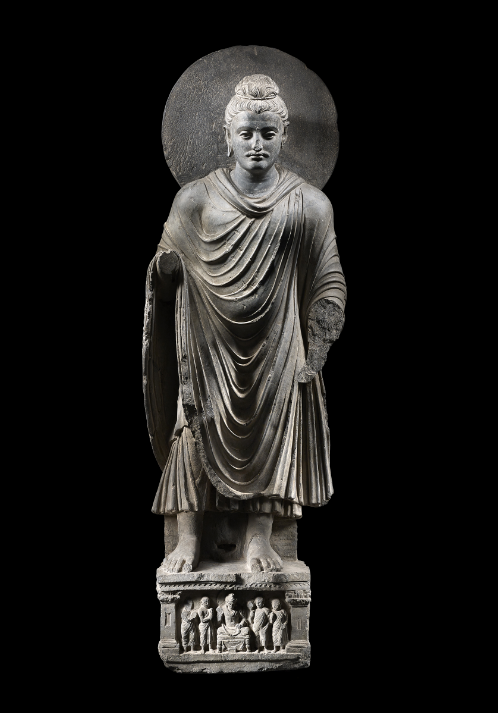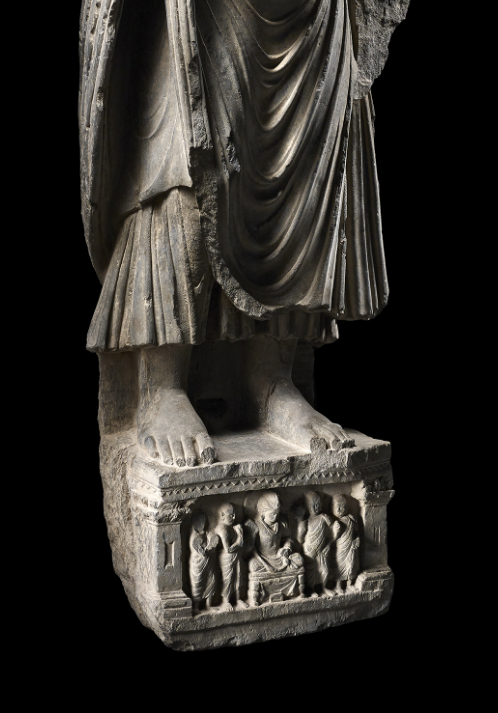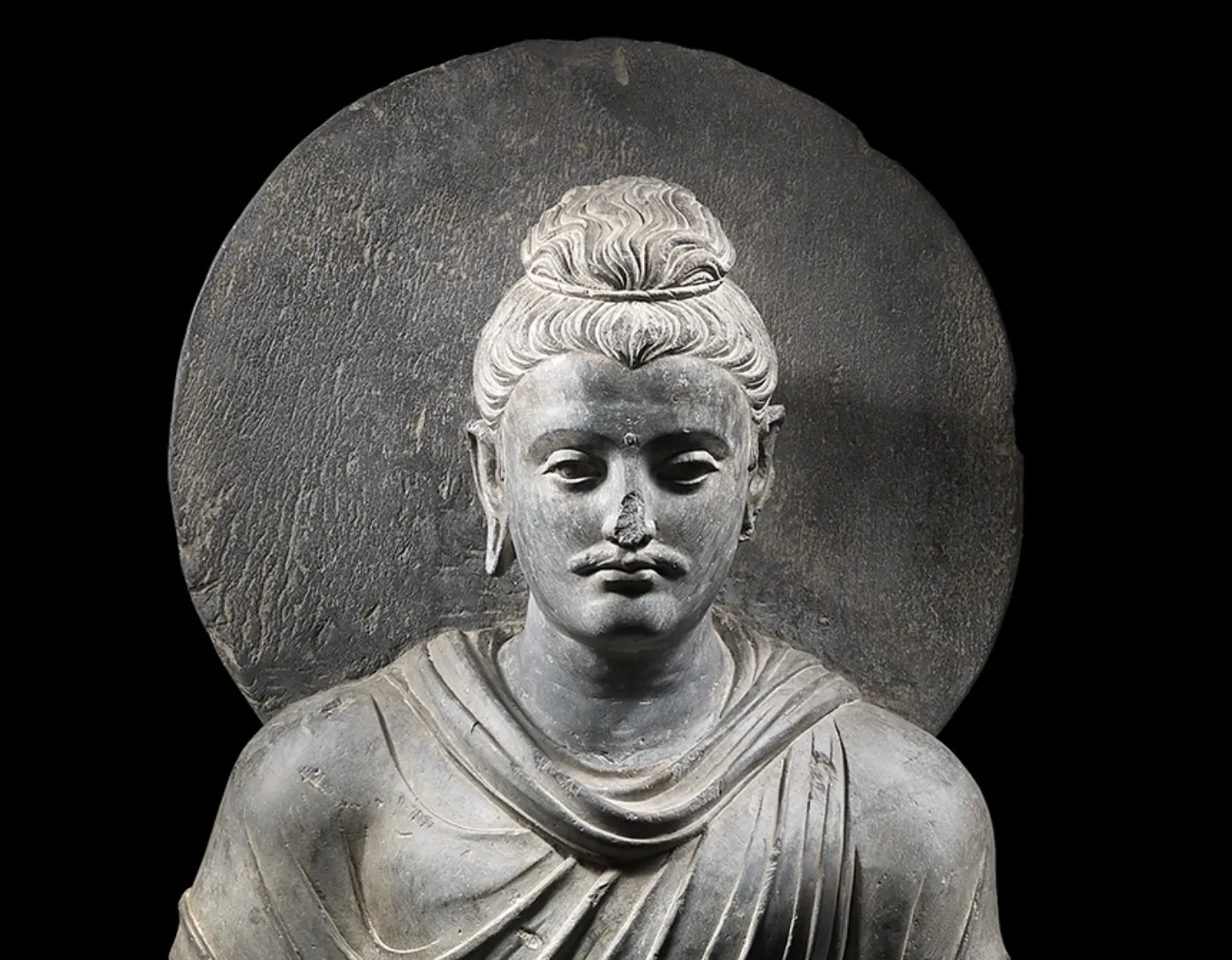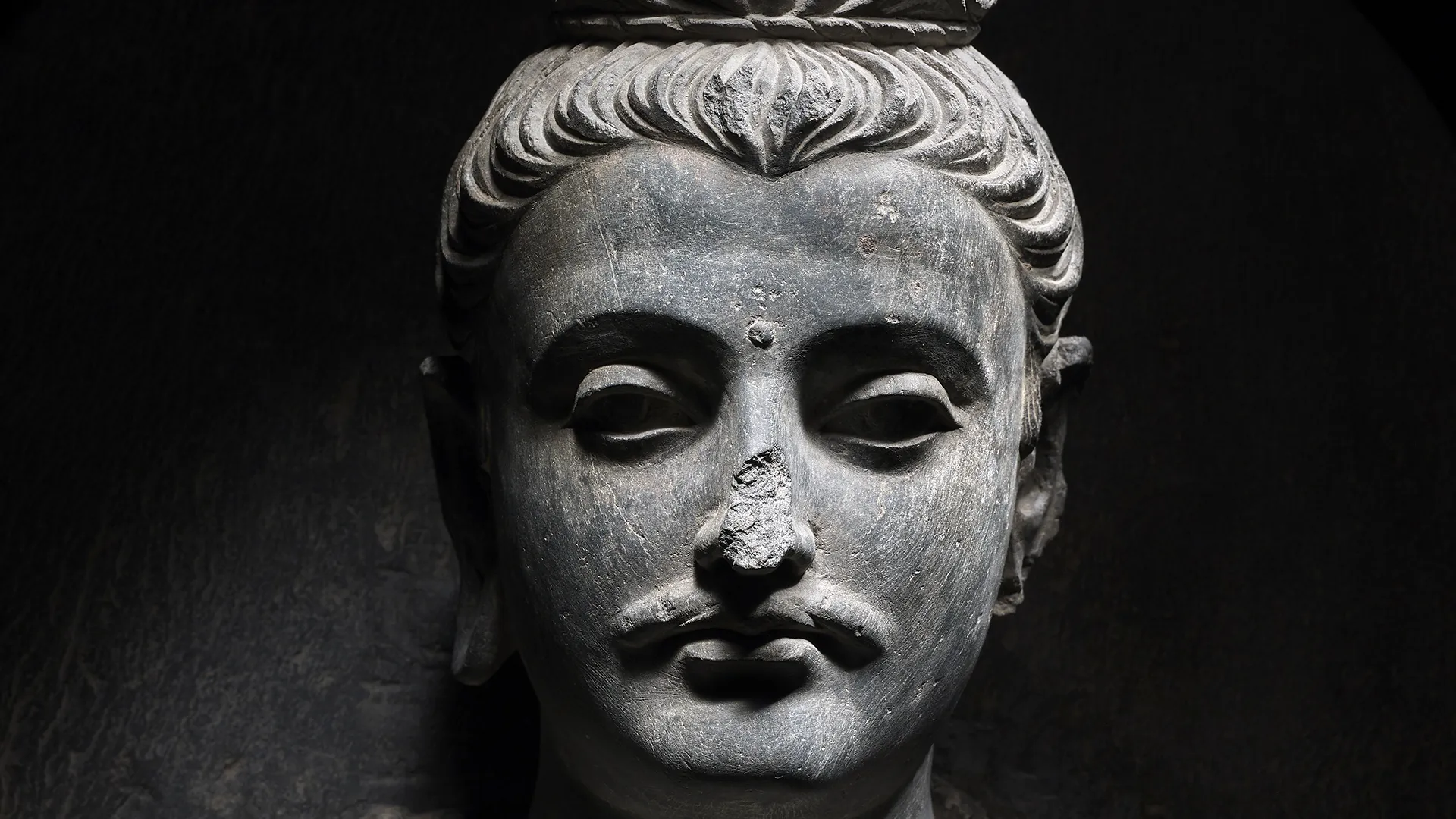Among the most important developments in Gandharan art was the creation of some of the earliest iconic images of the historical Buddha. Earlier depictions of the Buddha had relied on symbols — a tree, an empty throne, a stupa (Buddhist reliquary), footprints, or a wheel — to represent the founder of the faith.
But by the first century CE, in Gandhara and at the north Indian center of Mathura, artists produced images of Shakyamuni Buddha in the form of a noble youth whose transcendent nature was evident in physical signs (lakshana) such as a mark between the brows, a cranial protuberance, and elongated earlobes. In Gandhara, Buddha images also drew from Greco-Roman traditions for representing their gods and noblemen — cloaked in tunics, wearing mustaches, and exhibiting thick, wavy hair and powerful physiques.
Few Gandharan images bear dates in reigns that can be securely identified. However, a firm foundation for Gandharan chronology may be established by referring to the Bimaran and Kanishka reliquaries noted above and to Gandharan coins issued during the reign of Kanishka (127-150 CE), which also show the Buddha in anthropomorphic form.
Large scale images of the Buddha, meant to be the focus of ritual worship in temples or at stupa shrines, are likely to have existed at that time or slightly later. In this collection are two outstanding examples of Gandharan Buddha figures in stone — one the historical Buddha Shakyamuni (cat. no. 1), the other Maitreya (cat. no. 2), the Future Buddha.


The Buddha Shakyamuni stands in gentle contrapposto, a slight bend in the right knee, the heavy upper robe covering both shoulders, the lower robe falling just above the ankles. The heartshaped face is framed by wavy hair drawn into a low chignon on top of the head, also drawing attention to the Buddha’s ushnisha — a cranial protuberance which is one of the lakshana of his supernal nature. Incised eyes are slightly downcast, suggesting an inward presence (cat.no. 1). Befitting a sculpture of nearly two millennia, there is wear to the surface — the nose, robes, ankles, and feet show minor damage, as well as a rich patina.
Comparisons may be drawn with a smaller figure of Buddha in The Metropolitan Museum of Art in New York. Both figures are of exceptional quality, with gentle, inward-looking faces, similarly draped in heavy robes, and feet with long elegant toes.
Both figures stand on a platform above a narrative scene of the Buddha flanked by four robed figures, enclosed by a chevron-bordered roof and supported by columns (in cat. no. 1.2, Corinthian columns). The narrative scene at the base of the sculpture also resembles a pedestal with narrative scene in the British Museum, where one finds a very similar seated Buddha flanked by attendants and Corinthian columns, with a chevron-design roof above.

